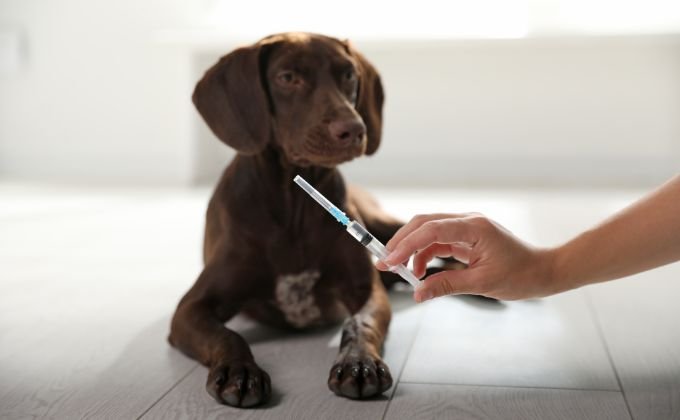Veterinary ultrasound imaging has revolutionized how veterinarians diagnose and treat various medical conditions in pets. This non-invasive diagnostic tool offers pet owners a powerful method for ensuring their beloved companions receive the best possible care. If you’re a pet owner, understanding veterinary ultrasound imaging can help you make informed decisions about your pet’s health and well-being. This article will explain the fundamentals of veterinary ultrasound, its benefits, and what you can expect during the procedure.
Understanding Veterinary Ultrasound Imaging
Veterinary ultrasound imaging employs high-frequency sound waves to create images of an animal’s internal organs and structures. A small device called a transducer emits sound waves that travel through the body and bounce back when they encounter different tissues, such as organs, fluids, or even abnormal growths. These echoes are processed by a computer to produce real-time images that veterinarians can analyze.
Unlike X-rays, which primarily visualize bones, ultrasound is particularly effective for examining soft tissues. This makes it invaluable for assessing the heart, liver, kidneys, bladder, and other internal organs. The non-invasive nature of ultrasound means it typically does not require sedation, making the procedure safe and relatively stress-free for pets.
Benefits of Veterinary Ultrasound Imaging
1. Early Detection of Health Issues
One of the most significant advantages of veterinary ultrasound imaging is its ability to facilitate the early detection of health problems. By providing detailed images of internal organs, ultrasound can help veterinarians identify issues such as tumors, cysts, or organ abnormalities at an early stage. Early diagnosis often leads to more effective treatment options, improving the prognosis for your pet.
2. Real-Time Imaging
Ultrasound offers real-time imaging, allowing veterinarians to observe the function and movement of organs. This dynamic assessment is particularly beneficial for conditions involving the heart, where evaluating blood flow and heart function is crucial. Real-time imaging helps veterinarians make informed decisions regarding diagnosis and treatment plans.
3. Guiding Treatment Plans
Veterinary ultrasound can assist in guiding treatment decisions. For example, if a veterinarian detects an abnormality in the liver, they may recommend further diagnostic procedures, such as a biopsy. This targeted approach minimizes unnecessary interventions and helps ensure that pets receive the most appropriate care for their specific conditions.
4. Non-Invasive and Safe
Ultrasound is a non-invasive procedure that typically does not require sedation. This safety aspect is particularly important for pets with underlying health issues or for those undergoing routine check-ups. The absence of ionizing radiation further enhances the safety of ultrasound imaging, making it suitable for pets of all ages.
5. Monitoring Chronic Conditions
For pets with chronic health issues, regular ultrasound assessments can be invaluable. By monitoring changes in internal structures over time, veterinarians can track the progression of diseases and adjust treatment plans as needed. This ongoing evaluation helps ensure that pets receive timely care and appropriate interventions.
6. Enhanced Reproductive Health Management
Veterinary ultrasound imaging plays a crucial role in managing reproductive health in pets. It can confirm pregnancies, monitor fetal development, and detect potential complications early on. For pet owners considering breeding, ultrasound can provide essential insights into the health of the mother and her puppies or kittens.
What to Expect During the Ultrasound Procedure
1. Preparation
Before the ultrasound, your veterinarian may provide specific instructions to prepare your pet. This may include fasting your pet for a few hours to ensure clearer imaging of the abdominal organs. If your pet is nervous, you may want to discuss this with your veterinarian, as some clinics offer calming treatments to help reduce anxiety.
2. The Procedure
During the ultrasound, your pet will typically be positioned on a padded table. The veterinarian or a trained technician will apply a water-based gel to the area being examined. This gel helps transmit sound waves and improves image quality. The transducer is then moved across the area to capture images of the organs and tissues.
The procedure is generally painless, and most pets tolerate it well. While some pets may feel a bit uncomfortable with the gel or the cold transducer, the process usually takes about 30 minutes to an hour.
3. Post-Procedure
After the ultrasound, your veterinarian will review the images and discuss the findings with you. Depending on the results, additional diagnostic tests or treatment options may be recommended. It’s essential to ask questions and clarify any concerns you may have regarding your pet’s health and the next steps.
Conclusion
Veterinary ultrasound imaging is a valuable diagnostic tool that provides pet owners with critical insights into their pets’ health. With its ability to detect issues early, facilitate real-time monitoring, and guide treatment decisions, ultrasound is an essential component of modern veterinary care. Understanding the benefits of this non-invasive procedure can help you make informed choices about your pet’s health and ensure they receive the best possible care. If you have questions or concerns about veterinary ultrasound imaging, don’t hesitate to discuss them with your veterinarian to learn more about how it can benefit your beloved companion.
